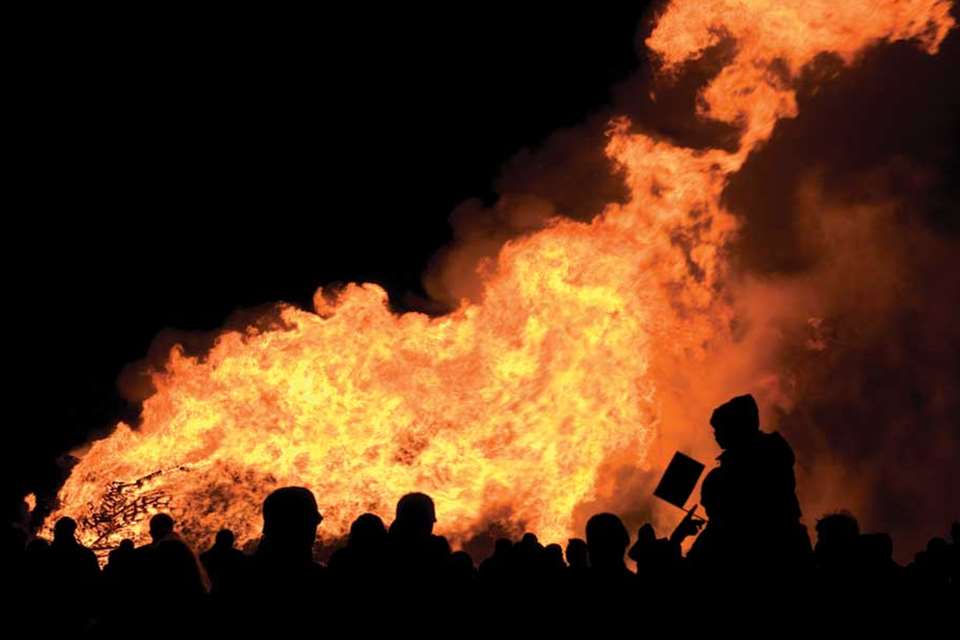EYFS Activities: Five things to do with… twilight
Julie Mountain
Monday, February 19, 2018
Have fun outside in the dark early evenings remaining before the clocks go forward, writes Julie Mountain

Download the PDF of Five things to do with...twilight
If you are lucky enough to be a wraparound setting, or a childminder, there is still time to make the most of an underused and underappreciated winter resource: darkness. With a month left before the clocks go forward, instead of heading indoors when dusk falls, stay outdoors and enjoy the excitement and drama of playing out after dark.
1: SENSORY TRAIL
Darkness offers an opportunity for children (and adults) to test their sensory perception. In daylight, agree a trail around the garden taking in the children’s favourite features and familiar objects. At each stopping point; smell the air; touch the surfaces; listen to the ambience; stick your tongue out and taste the wind.
Once darkness falls, navigating is more tricky; ask children to recall the route and attempt it again, repeating the sensory tests they tried earlier. Does outdoors feel, taste, look, sound and smell different after dark? Why do children think this might be?
If it is warm enough, set out picnic blankets and lie on them to star-gaze. After a while, children’s eyes will become accustomed to the dark and they will be able to see almost as well as Martin Waddell’s Owl Babies.
If you time it well, you could spot a shooting star or the International Space Station passing overhead; @VirtualAstro on Twitter has UK timings for when you can see it.
2: GLOW
Glow-in-the-dark objects are readily available and enormous fun. Careful (and abundant) placement of fluorescent items around the garden can create new perspectives on familiar spaces – for example, a glow-in-the-dark rope to create a trail to follow, flashlights pointed into the trees and shrubs or glowsticks hidden inside the playhouse.
Glowing objects enable children to explore and play outdoors with ‘new eyes’: help them traverse the climbing equipment or pretend to be nocturnal animals, such as a hedgehog or badger.
3. HYGGE
Who says hygge (a Danish word that roughly translates as cosiness) has to be an indoor phenomenon? It is perfectly possible to get cosy outdoors too. Build a water-resistant den with tarpaulins or old shower curtains (clothes airers are great for instant den building) and then fill it with blankets, cushions and battery-operated flickering tea lights. It’s the perfect place for twilight stories, hot chocolate and ‘midnight’ feasts.
Stories for hygge dens: One Snowy Night (by Nick Butterworth), No Room for Baby Roo (by Neil Griffiths) and Grandfather Twilight (by Barbara Helen Berger) are richly illustrated stories for cuddling up with in an outdoor den.
For more ideas on hygge, see: www.nurseryworld.co.uk/nursery-world/feature/1159754/enabling-environments-well-being-cosy-up. 
4: FIRE
Don’t restrict fire to November – it’s thrilling all year round. Brighten up gloomy late winter afternoons with sparklers, or build a small fire in a barbecue tray and toast marshmallows. Don’t be frightened of fire outdoors; it is easily managed with robust risk assessment. Using a barbecue tray will contain the fire and prevent it getting too large; you could also use a hand-held wax or garden torch, pressed into soft ground. Tie long hair back and cook on the end of arm’s length sticks (rather than shorter kebab sticks) to keep hands away from the flames.
Marianne Sargent’s Nursery World article ‘Let’s Explore… fire’ examines ways to introduce fire to children and how we stay safe around fire. See: www.nurseryworld.co.uk/nursery-world/feature/1144433/enabling-environments-enhanced-provision-explore. 
5. GAMES
Physical activity after dark does need to be carefully managed to avoid accidents, but if you have a clear, level outdoor space, children will find new physical and sensory challenges in playing well-known games.
Try running (is it scary to run in the dark?); throwing, catching and target games with glow balls, light-up balloons or beanbags; and football (with a bell inside). A glow rope can be utilised to mark out tracks or boundaries, and lightsabers will help the more boisterous children use up some energy before hometime.
RISKS… AND BENEFITS
Children will enjoy using head torches when playing out after dark, and these will also minimise the likelihood of slips and trips. Some children will be fearful of getting ‘lost’ outdoors in the dark – laying a trail of battery-operated tea lights, or a glow-in-the-dark rope will help them find their bearings in suddenly unfamiliar territory. A whistle is also helpful – quick, short blasts will help children locate you if they can’t see you!
Make sure everyone is well wrapped up when playing outdoors in the dusk; at this time of year the temperature can drop very quickly once the sun goes down.









